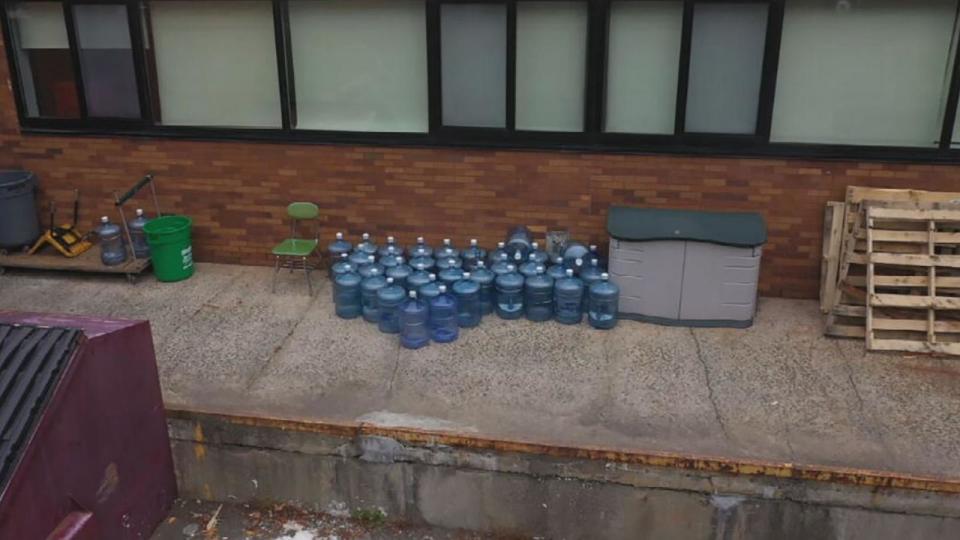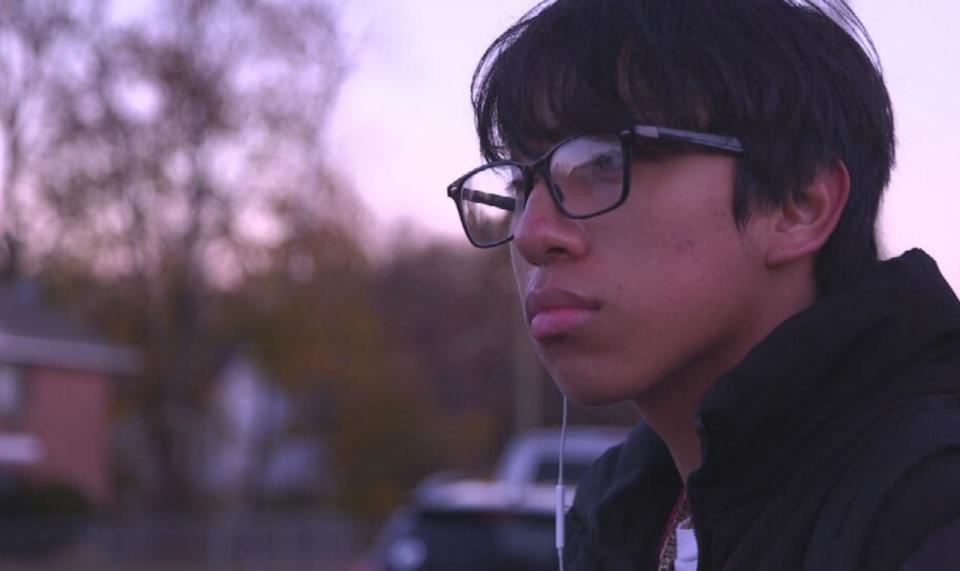Public schools across the country plagued by high lead levels in drinking water
When Francis Galicia, a student in Rockland County, N.Y., arrives at their high school for class each morning, they cannot help but notice that something vital is missing.
“We don’t have access to running water,” Francis said, referring to the lack of drinkable water from fountains.
Francis' high school is part of the East Ramapo Central School District, which shut off many drinking water fountains in 2016 after lead was detected. The problem was traced to the school's water fixtures. Francis was in fourth grade at the time, but seven years later the water fountains in question remain inoperable.
The district says the issue is being addressed and that they are working to replace water fountains. In the interim, the students are being provided with bottled water on a daily basis.
But Francis says the water coolers sometimes run out as the temperature rises.
“They don't acknowledge the fact that we're struggling,” Francis told ABC News. “But now I'm here telling you that we are struggling.”
East Ramapo is not the only school system that has experienced issues with lead in its water. For years, concerns have surfaced over lead in water pipes and fixtures in public schools across the country.

“Lead in water is everywhere,” said Paul Schwartz, a community organizer with the group Campaign for Lead Free Water.
And despite increased awareness of this issue, some advocates and medical professionals say more needs to be done to actually solve the problem since children are often considered to be particularly vulnerable to lead’s toxic effects.
“If a child is exposed to lead over a longer period of time, it can cause brain damage. It can cause these irreversible long-term changes that can affect things such as behavior, attention [and] learning,” said ABC News medical contributor Dr. Alok Patel. “The list goes on and it's devastating.”
Just how prevalent the issue of lead in school drinking water is across the country today is not known for certain since there is no national database that keeps track of every school’s lead levels.
“Unfortunately, school regulation is mostly voluntary,” said Schwartz. “Unless the states or local districts are prioritizing it, mostly folks don’t know what’s going on.”
There is no federal law requiring schools to test for lead if, as is the case for the majority of U.S. schools, their water comes from a public water system.
Schools that operate on their own water systems, a much smaller number, do have some requirements to test and disclose their lead data. An ABC analysis of 7,758 school water systems (those that are regulated by EPA) that were reported as “active,” or operating, during the third quarter of 2023, revealed that 77% of test samples taken had some level of lead contamination, 16% were in the double digits and 6% exceeded the EPA’s recommended maximum threshold. While the data represents reports as of the third quarter 2023, the findings come from tests that were done over the past 30 years.

“In thinking about the fact that there is no safe level of lead for consumption and that we should be avoiding it at all costs to protect those developing brains, it's really important that the public is paying attention to potential sources of lead,” Patel said.
With so little information available for parents and students regarding lead exposure at many schools nationwide, as part of “The American Classroom” initiative, ABC News Investigates, ABC Owned Television Stations and several ABC affiliates requested lead information from districts that serve a total of nearly 2.7 million students.
Of the more than 130 districts that were contacted, 75 did not respond to the requests, seven declined to answer questions altogether and 41 would only answer questions by phone or email.
"The real problem is that water authorities and schools don't want the political heat. They don't want the transparency or the accountability," Schwartz said.
Fifteen districts agreed to interviews about this issue. Several acknowledged the need to keep students and employees safely hydrated through actions like testing their water.
Some districts, including Jersey City Public Schools in New Jersey, pointed to the high cost of addressing aging water infrastructure. JCPS Superintendent Dr. Norma Fernandez said her district received a federal grant worth nearly $5 million for water remediation.
"It's about another $5 million to finish this project," Fernandez told WABC-TV, noting that this additional cost is being covered by the American Rescue Plan and will cover improvements in 14 buildings. "It's very expensive."
Advocates like Schwartz say that in the long run, a solution schools can use is called Filter First, a strategy that has been adopted by schools in Flint, Michigan, in the time since the city’s infamous water crisis. Lead and Legionella bacteria leached into the tap water of nearly 100,000 Flint residents between 2014 and 2015. The Legionella bacteria, a type of pneumonia-causing bacteria, killed 12 people, according to data from the Michigan Department of Health and Human Services.
The strategy involves lead-removing filters being installed at all designated drinking and cooking water outlets, with ongoing sampling and testing.
Filter First will soon be found in even more districts, with a new law requiring it to be implemented in schools throughout Michigan.
In New York’s East Ramapo Central School District, officials say many water fountains that are currently out of service due to lead concerns will be replaced by the time the next school year begins.
"East Ramapo educates students in schools built decades ago," Superintendent Dr. Clarence Ellis told ABC News by email. "They have been and continue to be upgraded and renovated.”
The problems in East Ramapo and the delayed response in fixing the water fountains have prompted the New York Civil Liberties Union to liken the situation to “environmental racism,” because the majority of students in the school district are students of color. The NYCLU has called for the state to intervene and take over.
“This is 21st century Jim Crow, 40 miles from New York City,” NYCLU Executive Director Donna Lieberman told ABC News, comparing East Ramapo to Flint, a predominantly Black community.
“What went on in Flint was that people were put at risk,” Lieberman said. “What’s going on in East Ramapo is that children are being put at risk because they’re going to school. And that’s comparable. It is not exactly the same, but it is comparable.”
The East Ramapo Central School District, its school board and the state did not respond to questions from ABC News about these allegations of environmental racism.
The New York State Education Department said it is working with the district, noting in a statement that “the majority of these fixtures will be replaced within a year's time as part of the district’s NYSED-approved plan to use $91 million in Federal COVID-response funds to address critical capital needs.”
For Francis, the completion of this work cannot come soon enough.
“I try my best to get the education that I need so I can succeed,” Francis said. "I want the water contamination to go away.”
ABC News’ Charlotte Greer, Alexandra Myers, Mark Nichols and Evan Simon contributed to this report.
Public schools across the country plagued by high lead levels in drinking water originally appeared on abcnews.go.com

 Yahoo News
Yahoo News 
